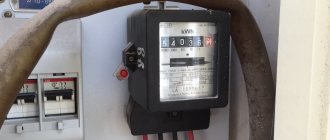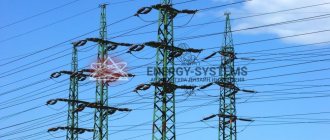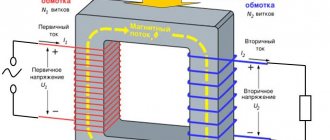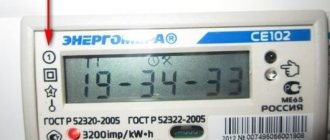The Electricity Saving Box is a small device that can (according to sellers and advertisements) reduce your energy bills by 5-60%.
The explanation of the principle of its operation for a buyer who is far from electrical engineering looks quite convincing. But our man is no longer as naive as he was 20 years ago. And he wonders: is the electricity saving box a scam or true? The promotional materials and instructions for the Electricity Saving Box describe the mechanism of operation of the device and how to use it. There you can even find efficiency tables showing in which cases it is most effective and where it can not be used. A strong argument for sellers is that Electricity Saving Box has certificates from Russia, Kazakhstan, Ukraine and Turkey. What kind of divorce can there be if there are certificates?
Let me note that Electricity Saving Box is just one of the “electricity saver” brands on the market. The same category includes EkoEnerji (Turkey), SmartBoy, Electricity Energy Electric Power Saver, “Econometer”. Typically, their country of origin is China. What these devices have in common is their stated principle of operation and efficiency. They also have the same switching circuit: parallel to the load, after the electric meter, but as close as possible to it.
EkoEnerji, 25 W
An attentive person will notice another common detail between the Electricity Saving Box and its analogues: the manufacturer states that energy savings can only be noticed in objects with a large inductive load. And there is some truth in this statement.
The first signs that the effectiveness of the Electricity Saving Box is far from the truth
Saving energy has been a global trend for many years. International corporations are trying in every possible way to make energy-consuming devices as economical as possible. They have specialized laboratories working on this problem. And any solution in the field of energy saving quickly spreads among manufacturers and it appears in products of world brands. This raises a reasonable question: why don’t we see analogues of the Electricity Saving Box from Philips, Samsung or LG?
“Savers” are sold through exclusive distributors. At the same time, well-known manufacturers of electrical equipment prefer to work through regional offices. This way they have direct access to sellers and large consumers and can provide them with information, scientific, engineering and technical support. Why doesn't the Electricity Saving Box manufacturer use this efficient circuit?
Electricity Saving Box
The third point is that the effectiveness of the Electricity Saving Box is usually assessed based on the change in current strength in the circuit (without the device and with it). Any specialist will tell you that a decrease in the total current in the network does not clearly indicate a decrease in power consumption. Why are there no direct measurements of consumed electricity or active power? Isn’t this tricky way of estimating energy savings when using the Electricity Saving Box used to scam potential buyers?
If the explanations of the operating principle of the “savers” go further than “know-how” and “an effect unknown to science,” then they will tell us about the conversion of reactive energy (it does not affect the speed of the meter) into active energy. Active electricity, unlike reactive electricity, can be used to convert into other types of energy, which underlies the operation of any consumer electrical appliances. But any physicist will tell you that reactive energy can only be spent on creating electromagnetic fields in inductive capacitors (for example, in the windings of electric motors). It cannot be converted into other types of energy. There are other fairy tale explanations that are readily swallowed by consumers who want to reduce their electricity bills.
Scientific research
When the effect of reverse energy in coils was discovered, it was not given much importance until large enterprises appeared with machine tools and enormous consumption of electricity. Then the search began for a device that is conventionally called the Electricity Saving Box prototype. The energy saver, reviews of which prompted this conversation, in some respects actually uses the operating principle of an industrial device.
Scientists have found that reactive electricity is not used in the operation of equipment, but it can be accumulated using capacitors. The main thing here is to correctly calculate the power and capacity. Once the reactive energy is captured, the capacitor discharges, turning it into active energy.
Studies have shown that such traps on an industrial scale provide significant savings. But this is all thanks to the fact that the enterprise employs hundreds of electric motors. There are no more than two dozen of them in apartments. 2-3 coils work at the same time.
Divorce Proof Electricity Saving Box
The electrical circuit of the device is the best proof of the veracity of the “saver” advertising. I couldn't find a diagram for most of them. A pleasant exception is the Electricity Saving Box. If you wish, you can find its circuit diagram on the Internet:
And what do we see? This is the most common filter-compensating device of two capacitors with an elementary rectifier. In advertising brochures I found information that the device also contains a source of higher harmonics, but it is not detected in this circuit. It seems that this entire structure is designed to power two LEDs emblazoned on the body of the device - a sort of mini-garland.
The only conditionally useful thing in it is a capacitor connected in parallel to the network. With the correct selection of the characteristics of such a capacitor, it will force the motors (washing machine, refrigerator, fan, etc.) to expend that same reactive energy to create a magnetic field more efficiently. This will relieve some of the load on the local power grid.
BUT: electricity consumption meters do not respond to reactive power. They “spin” in proportion to the consumption of active power only, which the Electricity Saving Box cannot influence in any way.
Theory, theory, but without experiment my evidence will not seem reasonable to everyone. The experiment does not require a hadron collider, electron microscope or anything else fancy. I connected various devices to the network and measured their power consumption using a wattmeter with and without parallel connection of the Electricity Saving Box. After which I found the difference between the power consumption with and without the “saver”. The voltage at the device input was 230 Volts.
- 60 W incandescent lamp - difference +8.2%
- Electric fireplace 1000 W - difference +0.3%
- Fluorescent lamp 11 W - difference + 18.3%
- Electric hammer drill 1100 W - difference -3.3%
Therefore, in most cases, the power consumption when turning on the Electricity Saving Box has increased. But in one case, when using a device with a powerful electric motor, small savings were noticed. I gave a probable explanation for the nature of this saving above - the engine uses reactive energy more efficiently, but its consumption is not taken into account by the electric meter.
If you wish, you can try to confirm this conclusion yourself. But I did not go for a large-scale experiment due to the need for a large volume of measurements and a fairly powerful long-term load on my home network. I already know that if a significant difference is found, it will not be in favor of the Electricity Saving Box. Modern electricity meters that comply with GOST R 52322 2005 should not be sensitive to the influence of such “energy savers”.
Distributors of many models of “energy savers” insist that they increase the energy efficiency of devices due to the generation of higher harmonics. As physics tells us, higher harmonics not only reduce the efficiency of an electric motor and many other devices, but also greatly increase active power losses in magnetic circuits. This will be especially noticeable in the example of fluorescent lamps.
Theoretically, such devices can even cause rapid failure of energy-saving lamps. Local resonances arising due to the generation of higher harmonics are dangerous for gas-discharge light sources, but can also cause damage to other electrical devices. The risk of the latter is especially high with the widespread use of “electricity savers” and low load on the network.
Thus, under certain conditions, the compensating ability of “electricity savers” can actually reduce electricity consumption. But, firstly, the saving effect is negligible, and, secondly, the connection diagram of the device is such that the electricity supplier benefits from this, but not the consumer. And the last thing is the most offensive. Only the sellers really benefit from the Electricity Saving Box. They buy this “innovative” device in China for $4 apiece, and sell it to hapless citizens for ten times that price.
Checking the declared characteristics
Some people purchase the Electricity Saving Box for more than just use. Real reviews say that there are some experts who are interested in how true the manufacturers’ statements are. They bought the device and made control measurements.
As it turned out, the device really reduces electricity consumption, but not by 50%, but only by 5-10%. This is such a minuscule figure that the return on investment for the saver becomes almost unrealistic. Instead of the stated couple of months, the buyer will process his purchase for more than six months.
At high loads in the network, it actually reduces the voltage slightly, but with a minimal drop, on the contrary, it increases it. This does not affect savings in any way. But it can cause a short circuit.
Negative reviews
- I am a skeptic in life, I believe very little in advertising texts, and for me the Electricity saving box was definitely no exception. When I ordered it, the first thing I did was take it apart to check what it was like. I’ll say right away that the case is durable, the assembly is good, of high quality, the LEDs placed inside the case did not disappoint. In addition to them, there is also a capacitor, the capacity of which I could not test at home. Yes, it will help relieve some of the load on the power grid, but the savings will not be as large as we would like; miracles simply do not happen in such cases.
- I bought an Electricity saving box, connected it, and used it for two months. What can I say - there are savings, but very small, somewhere around 15% per month compared to usual indicators. Well, the device compensates for some part of the next increase in the price of electricity, but nothing more.
- Before replacing my refrigerator with a new energy-saving model, I just bought an Electricity saving box to somehow reduce my electricity costs. So you can say that I conducted an experiment. So, energy-saving equipment really helps reduce costs by about 35%, maybe even a little more. But the Electricity saving box device provides only 10-15% savings. True, its installation is much cheaper than replacing equipment.
Benefits of use
The energy saver has a fairly simple, comfortable operating principle. In the process of daily use, it makes it possible to obtain the following results:
- conversion of reactive energy into active energy, which is taken into account by the meter during operation;
- regulation of voltage in the network, which avoids sudden surges and breakdown of devices;
- the ability to withstand the voltage of devices with quite high power.
The electricity meter is designed in such a way that it takes into account both active and reactive energy of the network and you have to pay for it. Since electrical appliances do not need reactive energy at all, it needs to be put somewhere, and this is what the energy saver does.
In the first years of using Electrisity Saving Box, many people speculated whether it was a scam or true, but now all doubts have completely disappeared. The Electrisity Saving Box really works and it's not a myth.
What wastes energy in your home?
Almost every household appliance is a source of reactive energy, which supposedly in private networks is quite dangerous and has high performance. The Electricity saving box, whose reviews and impressions are not the best, must transform it, just like in large enterprises.
The most obvious sources are devices on which electric motors of any power are installed: hair dryers, food processors, vacuum cleaners, electric drills, refrigerators.
There are a number of instruments and devices that require the use of direct current; they have parts that convert it to alternating current. This includes computer monitors, televisions, and gas lamps.
Electricity saving box, the principle of operation of which is copied from industrial traps, is an absolutely unnecessary item in the house. And all because most powerful home devices already have pre-designed capacitors that capture reactive energy that are suitable in terms of power.









